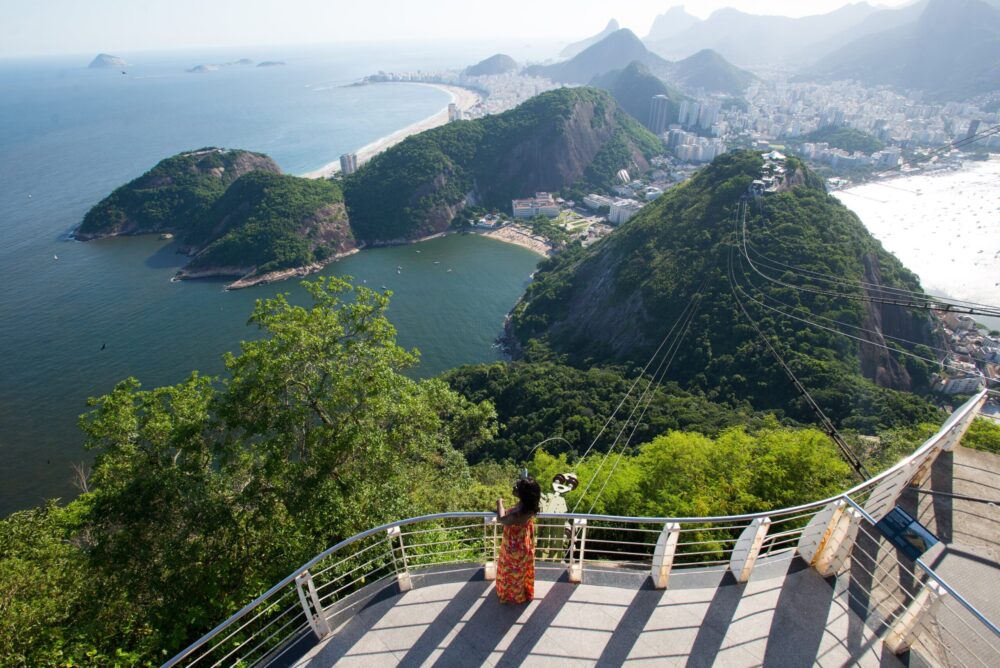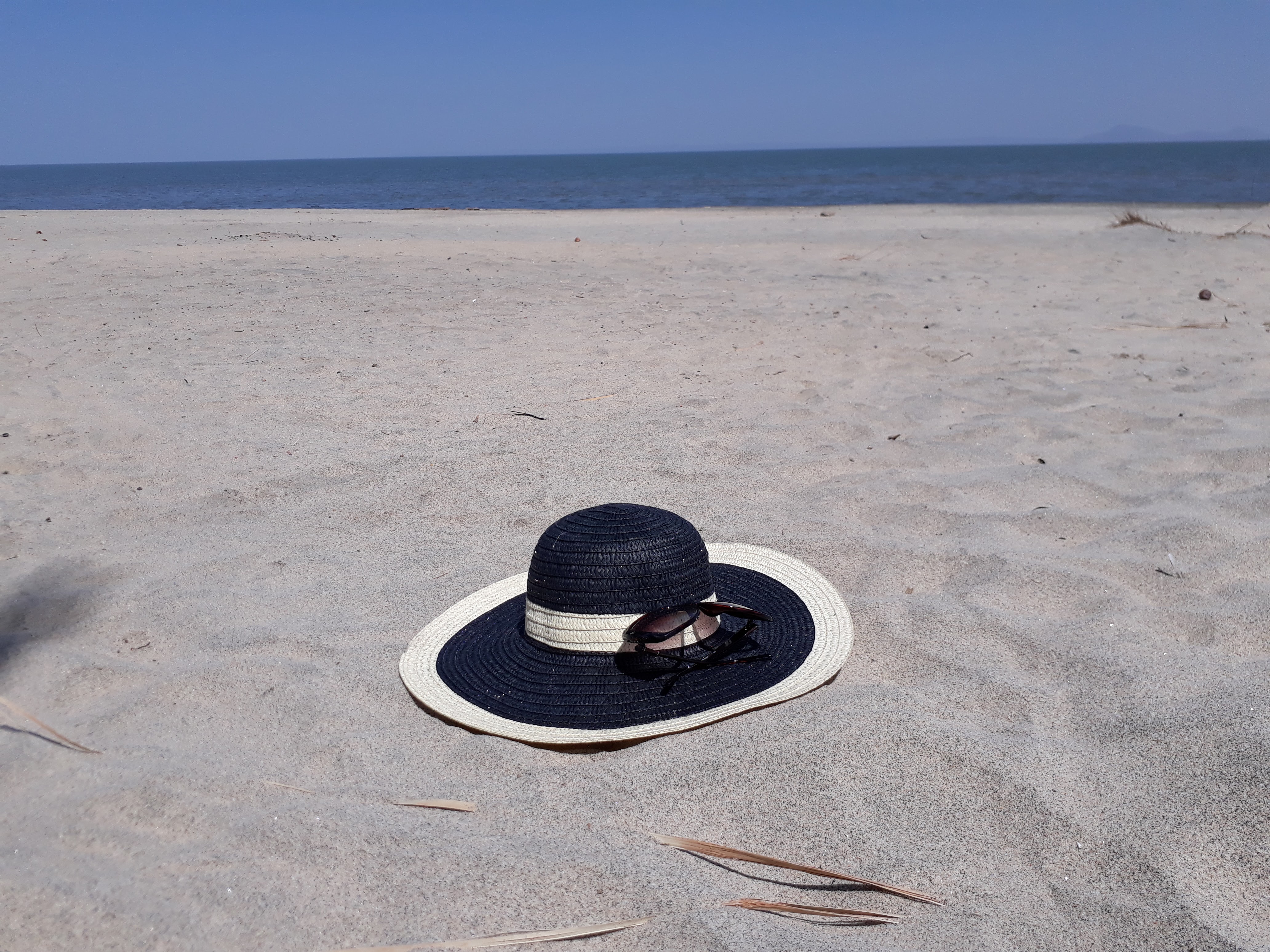
Do you want to go camping in a country that nearly has it all – perfect tropical climate all year round, vast swathes of free-roaming wildlife, white sandy beaches, turquoise blue natural hot pools, great food, shopping, and some of the most breathtaking sights and stunning views you’ll ever take in?
These things and more make camping in Kenya one of the best experiences in the world. It’s no wonder that Kenya is slowly gaining popularity as one of the most popular tourism destinations. With so much to do and so many different alternatives, there is practically something for everyone.
Currently, Kenya is largely being experienced through top of the range tours, safari lodges, and luxury tented camps, making it out of reach for most people.
If you have ever thought about touring the beautiful country of Kenya, but was always discouraged by the ridiculous costs involved, we’ve compiled our list of what we think are the best tent camping spots in Kenya off the beaten track.
By camping independently in these remote, rugged wilderness locations around Kenya, you get to escape the crowds and experience most of what the country has to offer, without breaking the bank.
Forget overcrowded lodges and campsites! The next time you think of relaxing and unwinding away from the hustle and bustle of the city, check out this list of some really under-the-radar campsites in Kenya you’ve probably never even heard of.
Whether you want to an uncrowded vantage point from which to catch a sun downer, or you’re looking for a thrilling travel experience such as getting up close and personal with animals in their natural habitat, Kenya has some great off-the-beaten-path camping options.
Select one, grab your tent, and hit the road out to some of the most remote parts of Kenya.

What's Covered in This Article
Eliye Springs Campsite, Lake Turkana
It’s finally time to relax and unwind from your daily hustle and the great outdoors are calling. You’re torn between hitting the beach, and camping. Why not do both at once?
Enter: this imposing beach camping spots along the shores of the Jade Sea, popularly known as Lake Turkana, where campers fall asleep to the sound of the waves and wake up to views that beat those of any luxury lodge.
The lake’s powdery white sand and warm turquoise blue waters are also ideal for swimming, or simply basking in tropical bliss.

Eliye Springs Camp sits drab smuck on the unspoiled beaches of Lake Turkana. As it is a very secluded spot, you will mostly be the only one at the site. Bye bye crowds.
The huge clean compound has sufficient space for pitching your tent between the sand dunes, under palm-trees that flourish in the area, or by the shores of the lake.
Eliye Resort – where the campsite situated – runs a Restaurant with a fully stocked bar. There is DSTV, a Pool-table, Darts, and a beach-lounge. There are showers, toilets, a swimming pool, and several water sport equipment.
Things to Do at Eliye Campsite:
- Hit an item off your bucket list with a visit to Lake Turkana. At 6,405 square kilometers (2,473 square miles), it is the the world’s largest permanent desert lake.
- Adventure on Lake Turkana
- Beach volleyball
- Boat riding
- Fishing
- Unforgettable sunrises and sundowners over the lake
- Visit attractions in Lodwar town
- Prehistoric sites
- Napuu Drip Irrigation Scheme
- Kenyatta House – formerly Lokitaung prison where the famous “Kapenguria six” were detained during Kenya’s fight for independence.
- Visit attractions around Lake Turkana
- Central Island – a paradise for birdwatchers! On a lucky day, you will find thousands of Flamingo in Flamingo Crater on the Island.
- Kalokol, a small fishing outpost at the edge of Lake Turkana.
- Stargazing under a constellation of stars
How to get to Eliye Springs Camp from Nairobi
- Distance: Eliye Springs Resort is located on the Western shores of Lake Turkana, 695 km north of Nairobi. 65 km east of Lodwar town.
- Roads: from Nairobi, Eliye Springs Camp is a long drive through Nakuru – Sigor Road to Kapenguria – Lodwar road (274 KM). Turn right at Kapenguria – Lodwar and drive a further 199 KM. End of good tarmac road. Then take the Lodwar – Kolokol road and drive on for 15.2 KM (lots of potholes). Turn right onto Lodwar Eliye Road and drive on for a further 47KM and you will be at your destination. Alternatively, from Nakuru head on to Baringo and take the new tarmac road between Loruk and Nginyang which takes you to Kalokol on the lake’s western shores.
- Airport: there is an airport at Lodwar, 62km from the camp. Transfers to and from Eliye Springs can be organized through their booking office.
- By Air: Access to Lake Turkana is usually by air and there are two all-weather airstrips. Also in Loiyangalani there’s one.
Eliye Springs Camping Fees
Camping is KES 1,000 per person if you use their tents.
Eliye Springs Camp Contacts
Call +254-703-891-810 or P: +254-738-827-522 for bookings and/or transfers.
===================================================================
Choroo Public Campsite, Central Island National Park
Choroo Camp is situated at Central Island National park, right in the middle of Lake Turkana. Quite an adventure to get and stay here. As is with most campsites on this list, bring your own everything because there are no basic amenities whatsoever. It is truly off-the-beaten-track beautiful.

A word of caution though, its not unusual to find crocodiles hanging out at the same spot where your boat docks! I found one on my last trip. But before you scroll down to the next camp site, I will quickly let you know that like the other wild animals, these crocodiles don’t give a damn about you. They have more than enough to feed on.
Unless of course, as is fabled, you’re an evil person. More of that in a later post.
Things to Do at Choroo Campsite:
- Hit 2 items off your bucket list
- Lake Turkana, the world’s largest desert lake
- Crocodile Lake, the world’s largest crocodile nursery. It is estimated that there are over 10,000 crocodiles in Lake Turkana, and Central Island National Park is their breeding ground.
- Visit the Flamingo Lake – the volcanic island lakes attract lesser flamingo so if you’re lucky you’ll see them.
- Hike the trail circuit around Central Island National Park. Don’t miss to the the stunning view point overlooking Crocodile and Tilapia Lakes and majestic Lake Turkana below.
- Fish for catfish after sunset when they come out to feed.
- See some prehistoric fish such as huge Nile perch, large tilapia, Puffer fish,etc
- Birdwatchers’paradise – Central Island is home to over 84 water bird species, including 34 species of European migrants most spectacularly viewed as they return home between March and May.
- Watch unforgettable sunrises over Sibiloi National Park on the far eastern shore.
- Sample the unique volcanic landscape
How to get to Choroo Campsite from Nairobi
You can only get to this campsite either by boat from Eliye Resort, or Kalokol (a small fishing village).
- Distance: Choroo Camp is located in Central Island National Park, about 25KM away from Eliye.
- By Road:
- Driving: from Nairobi, Eliye Springs Camp is a long drive through Nakuru – Sigor Road to Kapenguria – Lodwar road (274 KM). Turn right at Kapenguria – Lodwar road and drive a further 199 KM. End of good tarmac road. Then take the Lodwar – Kalokol road and drive on (or take a matatu) until Kalokol. You then take a boat from the shore (use your bargaining skills well) to Central Island. Alternatively, from Lodwar, drive to Eliye Springs, then hire a boat from there. We paid KES 18,000 in 2016 for an eliye – Central Island return trip.
- By Public Transport: The distance from Kitale to Eliye Springs is about 350 KM. Bus companies such as Eldoret Express, Dayah, Fomoco, etc ply the Kitale – Lodwar route.
- Airport: there is an airport at Lodwar, 62km from the camp. Transfers to and from Eliye Springs can be organized through their booking office.
- By Air: Access to Lake Turkana is usually by air and there are two all-weather airstrips. Also in Loiyangalani there’s one.

Choroo Public Campsite Fees
Camping is KES 1,000 per person if you use their tents.
Eliye Springs Camp Contacts
Call +254-703-891-810 or P: +254-738-827-522 for bookings and/or transfers.
===================================================================
Lake Paradise, Marsabit National Park
This is a birder’s paradise, but is also a perfect camping spot for the camper who is out to score wildlife sightings. Unfortunately, Lake Paradise campsite lacks basic amenities, so you must be 100% self sufficient.

Things to Do:
- Gave drive and try spotting the large tusk elephants Marsabit National Park is famous for, as well as other wildlife e.g. rhinos, lions, leopards, cheetahs, buffalo’s, wart hogs, reticulated giraffes, hyenas, antelopes, etc.
- Take in the views from any of the 3 craters.
- Star-gaze
How to get to Lake Paradise Campsite from Nairobi
- Distance: 560 km north of Nairobi.263 km north of Isiolo.
- Gates: 2 Gates; Ahmed with an exit at Karare, and Abdul to the park headquarters
- Roads: from Nairobi, the reserve is reached via Nanyuki and lsiolo a distance of 570 km. The road is paved up to Merille leaving a distance of 120 km of murram road that is only accessible by 4 wheel-drive vehicles during the dry season.
- Airstrips: there is an airstrip at Marsabit, 4km from the Park’s main gate.
- By Air: Marsabit Reserve is 2 hrs by air from Nairobi and is adequately served by a tarmac airstrip located about one kilometer from Marsabit town centre.
Lake Paradise Camping Fees:
Citizens: Child/Student: KSHS 200 Adult: SHS 250
Residents: Child/Student: KSHS 350 Adult: SHS 600
Non Residents: Child/Student: $20: Adult $35
4. Ngare Ndare Forest
For those tent campers interested in camping out in the wilds of the forest, Ngare Ndare Forest offers a wilderness campsite. Located 4 hours from Nairobi, the forest is the nestled between Mount Kenya and the Lewa Conservancy.
There are two campsites that are sited on a clearing in a bushy area near flowing water. The campsite is equipped with clean running water, a toilet and a bathroom. Well trained guides and armed rangers are on site to ensure that you have an informative and fun filled camping trip.
Ngare Ndare is also a great spot for fly-camping.

Activities
- Tree Canopy Walk – Relax and enjoy a view of the river and forest from The Canopy – an 80 ft. high aerial bridge of wiremesh and cables running through the tree canopy.
- Guided forest hikes
- Bird watching
- Minor grade rock climbing and abseiling
- Canyoning
- Game drives
- Swim/dive at the waterfall pools
How to get there
From Nairobi, Get on Thika Rd/A2 then head to Nanyuki (about 236 KM away). Once in Nanyuki, get on to Nanyuki – Meru Road and go on all the way past Timau. To get the forest, get off the main tarmacked road on to the murram road and you should be at your destination in about half an hour.
Ngare Ndare Forest Entry fees
KES 2,000 for citizens/residents and KES 3,000 for non-residents.
Contacts for Ngare Ndare
Email: bookings@ngarendare.org or call 0700 412 532
===================================================================
Netbon Kudu Campsite, Baringo

Netbon Kudu Campsite is located at Maji Moto Village in Baringo County. The camp sits along the periphery of Lake Bogoria National Reserve – some 8 KM away – making it a perfect base for exploring Baringo County. Kudu camp also makes a great homebase for birdwatchers to mark off many waterbirds.
The camp has three bandas/cottages each with 3 beds made out of concrete to help cool off the banda at night.
Kudu Campsite has the basic amenities you’d expect a campsite to have: pit latrines, a bathroom, a shared open-sided shelter and a fire ring.
For half the banda fees, Kudu Campsite welcomes you to pitch tent under a very old tamarind tree that was presumably used by white-settlers during the colonial times.
With the many nearby attractions, and the naturally heated spa that is Maji Moto, it will be tough to leave Kudu camp!
Things to Do:
- Take a riverine breakfast and/or dinner and at the natural Maji moto hot spa.
- Visit Lake Bogoria National Reserve whose main attraction are the flamingos, geysers, rich bird life and wildlife e.g. the endangered kudu antelopes, and beautiful landscape.
- Go on guided walks and/or field studies on geotourism and archaeology around the Majimoto area
- Swim at the warm Maji Moto natural hot spa/plunge pools – that are always at 38°c.
- Watch the awesome sunrises and sunsets.
- Star gaze at the billions of magical stars.
- Relax and unwind around a blazing bonfire .
How to Get to Kudu Campsite, Maji Moto from Nairobi
Kudu camp can be accessed via the Nakuru-Baringo Highway. Just before Mogotio Shopping Centre, take the rough road that branches off to the right and you will find yourself at the Maji Moto gate.
Kudu Campsite Camping Fees:
Residents: KES 500
Nonresidents: KES 1,000
Kudu Campsite Contacts
Jeremiah : 0723362546 or 0737-996098
===================================================================
Wilderness Camping
Safari goes to a whole new level when there’s only a thin sheet of canvas between you and the deadly residents of the Kenyan wilderness. It gets more interesting when you’re woken up in the middle of the night by the rummaging of elephants, by the roar of lions, or even by the laugh of hyenas.
All the wilderness campsites in this section aren’t fenced. Hence the requirement for a guide as you’ll soon find out. But rest assured that these beasts don’t give a damn about you. As long as you maintain your lanes and don’t interfere in their business.
Just one tip – make sure you are 100% self-sufficient before embarking on your camping trip due to the nature of these sites. The campsites are public, and most lack basic amenities such as showers, toilets, running water, etc, so . But that’s the whole fun. Besides, it helps in keeping the crowds away.
===================================================================
Rhino Sanctuary, Sera Conservancy
Sera conservancy hosts the black rhino sanctuary, where you get an opportunity to participate in rhino tracking. Key amenities are lacking in the conservancy therefore campers must be totally self sufficient to enjoy the experience.
Getting to Sera from Nairobi
- Distance: 560 km north of Nairobi. 263 km north of Isiolo.
- Roads: from Nairobi, the reserve is reached via Marsabit road and lsiolo a distance of 570 km. At Servoloi town, turn East. From here the bandas are a 1 hr drive. The road is paved up to Servoloi town leaving a distance of 94 km of murram road that is only accessible by 4 wheel-drive vehicles.
- Airstrips: there is an airstrip at Marsabit, just about 4km from the Park’s main gate.
- By Air: Marsabit Reserve is 2 hrs by air from Nairobi and is adequately served by a tarmac airstrip located about 1 KM from Marsabit town center.
Things to do:
- Join the rhino monitors for a Walk with the Rhinos
- Game drives in the conservancy
- Visit Kisima Hamsini -perennial natural springs – to view the sandgrouse flock.
- Take walks on the lugga
- Watch the sunset
- Stargaze
Camping Fees:
- Camping in the conservancy – KES 2,000 per day
- Camping/access to Rhino Sanctuary – KES 3,000 per day
- Walking With Rhinos experience – KES 5,000 per person
- Ranger fees per day – KES 1,000
Sera Conservancy Contacts
Call Northern Rangelands Trust’s tourism on 0701 295 357 or E-mail them at: tourism@nrt-kenya.org.
==================================================================
Kisima Hamsini, Samburu County
Bird watchers, rejoice! This is your go-to campsite.
Kisima Hamsini, just as the name suggests, is a group of 50 traditional man – made livestock and wildlife watering holes. The local pastoralists dug deep holes through the calcrete surface rock to access the natural reservoir underneath.
For the longest time, Kisima Hamsini has played host to one of the greatest, unsung natural displays of the avian world. Every morning for about 40 minutes during the long dry season, more than 40,000 Black-faced Sandgrouse pour overhead from the surrounding deserts to drink.
Gong Rock campsite is about 1 KM from here. Like most of the other sites on this list, this campsite too lacks basic amenities so you need to be totally self-reliant.
Other Things to do at Kisima Hamsini:
- Game watch at the watering holes
- Play one of the world’s oldest instruments – Sera’s peculiar Gong Rock, which when struck with a rock clangs like a bell.
Sera Conservancy Camping Fees:
- Camping in the conservancy – KES 2,000 per day
- Camping/access to Rhino Sanctuary – KES 3,000 per day
- Walking With Rhinos experience – KES 5,000 per person
- Ranger fees per day – KES 1,000
How to Reserve Independent Camping at Kisima Hamsini
Call Northern Rangelands Trust’s (NRT) on 0701 295 357 or E-mail them at: tourism@nrt-kenya.org.
===================================================================
Kalama Conservancy
Though an easy day drive from Nairobi, the campsites at Kalama lack basic amenities so you need to be totally self-reliant.
Lgoita Rocks campsite
Set at the base of a vertical rock formation, Lgoita is a great base for exploring Kalama Conservancy.
Lbaa Campsite
A larger, well cleared, and very well shaded site along the river bank, commonly used by safari operators. Lbaa campsite is home to plenty of bird and insect life.
Things to do:
- Game drives – try to spot Elephants, Zebras, leopard, etc.
Kalama Conservancy Camping Fees:
- Camping/conservancy fees:
- Citizens – KES 2, 000
- Residents – KES 3,000
- Non residents – KES 5, 000
- Ranger/guides – KES 1, 000 perday
How to reserve a camping spot at Kalama
Call NRT Tourism on 0701 295 357 or Email: tourism@nrt-kenya.org.
==================================================================
Shaba National Reserve
Shaba is definitely not for the amateur camper. There are literally no amenities at any of the campsites here – no fireplace, no toilets, no running water, no trash cans, nada! You must therefore be 100% self-sufficient. Water can however be fetched from the KWS ranger posts. Fortunately, you will be cruising on tarmacked road all the way from Nairobi except for the last 9 KM stretch.
Campers at Shaba National Reserve have 4 main campsite options – Funan Special Campsite No. 3, Dakadima Special Campsite 5, Dudubatu Special Campsite 6, and Robin Hurt’s Special Campsite 7. All three campsites except Funan are by the Ewaso N’giro river.
Despite all these drawbacks, Shaba is one of the most diverse in the country. With more than 300 species of birds, this secluded spot makes a great home base for avian fans as it offers very rewarding dry-country specials birding opportunities.
Shaba National Reserve Entrance Fees
Park fees (per day): Citizen KES 500 Residents KES1,000
Camping fee (per day): Citizen KES 500 Residents KES1,000
One off campsite booking fee ( applicable to all campsites): KES 7,500
Ranger fee (per day): KES 1,500 – 2,000 per ranger (It is compulsory that you take 2 rangers)
How to Get to Shaba National Reserve from Nairobi
Nairobi – Thika – Makuyu – Karatina – Kiganjo – Naromoru – Nanyuki – Timau – Isiolso – Shaba Nartobe Gate

Things to Note:
- All these campsites are classified ‘special’ and therefore you must book your stay in advance.
- The large booking fee plus additional secuirty fees really add up. It is therefore recommended for campers to visit in a large group so as to split costs.
- As you plan your camping trip, leave one space in your vehicle or the game rangers who have to accompany you into the park.
- Rangers are dispatched without any food, water, or sleeping arrangement. Technically therefore, make sure to “factor them” into your camp trip planning.
Shaba National Reserve Contacts:
Mohamed : 0713 005 065
===================================================================
Know of an off-the-beaten path camping spot that we missed? Make sure to let us know in the comments below!
Shout out to the Kenyan Camper whose great blog I’ve secretly been admiring and through which I got a tonne of resources for this post; as well as inspiration to #tembeaKenya more.



